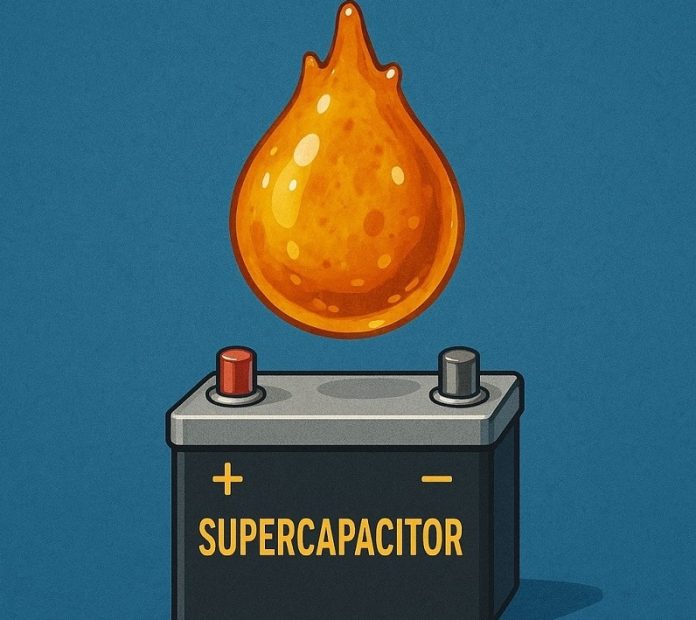
A sticky substance from trees in India might hold the secret to making energy storage devices called supercapacitors last much longer and become more eco-friendly.
Researchers from Scotland, South Korea, and India have discovered that a natural tree gum—normally seen as waste—can be used to improve the performance and lifespan of supercapacitors.
These devices are often used in electronics, electric vehicles, and power grids because they can charge and discharge very quickly.
However, they don’t hold as much energy as regular batteries and tend to wear out over time.
One of the main problems with supercapacitors is that the acidic liquids (called electrolytes) inside them can react with the metal parts, causing damage that reduces their ability to store energy.
This means supercapacitors often need to be replaced, adding to the growing problem of electronic waste.
The research team, led by Dr. Jun Young Cheong from the University of Glasgow, came up with a clever solution.
They used gum kondagogu, a natural gum that comes from the bark of the Cochlospermum Gossypium tree, which is found in India. This gum is usually considered useless and is even seen as a disposal problem for the Indian government.
The scientists mixed this gum with another natural substance called sodium alginate to create a sponge-like material called KS. When KS was added to the acidic liquid inside a supercapacitor, it formed a protective layer over the carbon electrodes.
This layer prevented the parts from breaking down while still allowing the supercapacitor to work as normal.
In lab tests, the supercapacitor with the KS layer kept 93% of its energy capacity after 30,000 charging and discharging cycles.
In comparison, a regular supercapacitor dropped to just 58% after the same number of cycles.
That’s a big difference. According to Dr. Cheong, if a device using this improved supercapacitor were charged once a day, it could last more than 80 years.
What makes this discovery even more exciting is that KS is biodegradable and recyclable. So, not only does it help supercapacitors last longer, but it also makes them better for the environment.
This study adds to Dr. Cheong’s broader research into turning natural waste materials into useful parts for energy storage. The international team hopes that this tree gum innovation can be used in the future to create longer-lasting, greener electronics.



